When I was recently setting up my new DWC (Deep Water Culture), I wondered how many bubbles are too much for my DWC system. As a newbie grower, I was afraid to mess everything up and kill the whole thing. So, I did some research to find the actual amount of bubbles that are not considered too much for my plants to handle.
So how many bubbles is too much for your DWC? Following a general rule of thumb, an average 5-gallon water bucket would require a 5-watt air pump with 9 LPM(1-watt per gallon). However, you should not worry about the number of bubbles flowing in your DWC as long as your air pump ratio is between 1 watt per gallon and 2 watts per gallon.
Many growers think that too many air bubbles would mean that an increased amount of oxygen will be reaching the roots and in most cases they are right! No one can argue that oxygen plays an extremely critical role in root growth, but the actual reason why too many bubbles could harm your plants is not related to oxygen, it’s due to other factors.
In this article, I will try to list the harmful effects of having too many air bubbles on plants. Furthermore, you will know how to overcome them with simple tricks that are easy to follow.
The Problems Of Too Many Air Bubbles In A DWC?
Keeping your DWC well aerated with air bubbles is the reason why plant roots can survive easily in an underwater environment. However, there is a law of inverse consequences. Too many air bubbles will have significant adverse effects that could affect your plant’s ability to thrive.
As your air pump keeps pumping air in your DWC, it increases the dissolving rate of the elements in the air with water, especially when the air bubbles are small, which increases the surface area. The elements present in the air are :
- Nitrogen 79% with a solubility of around 0.017 grams per kilogram of water
- Oxygen 20% with a solubility of around 0.04 grams per kilogram of water
- Argon 1% with a solubility of around 0.055 grams per kilogram of water
When taking into consideration the high surface area of the tiny air bubbles and the high solubility of Argon with water (higher than Oxygen), having too many air bubbles in your DWC might not be a good idea. The accumulation of dissolved Argon as time passes will cause water toxicity that will affect your plants in a harmful way that might lead to death.
Moreover, people living in coastal areas will have more drastic effects due to the increased salt percentage in the air that might accumulate and seriously harm their plants.
Another obstacle that will affect commercial growers in grow tents is increased Carbon Dioxide concentration in the air. Now we all know that carbon dioxide is required for plants to do their photosynthesis. The actual problem here is the increased concentration of dissolved CO2, which will lower the PH of the water, making it extremely dangerous for the plants. So, unless you are a commercial grower with high CO2 concentrations in the air, the PH level will be just fine for your plants.
The most obvious way to avoid water toxicity is to change the water regularly. Not only does it decrease the risks of your water reaching toxic levels of various air elements, but also it will protect your plants from nutrient deficiencies. Also, make sure that you do not overdo this step by changing the water too frequently, once a week is more than enough, and remember that the whole idea of DWC hydroponics is to save water, not waste it.
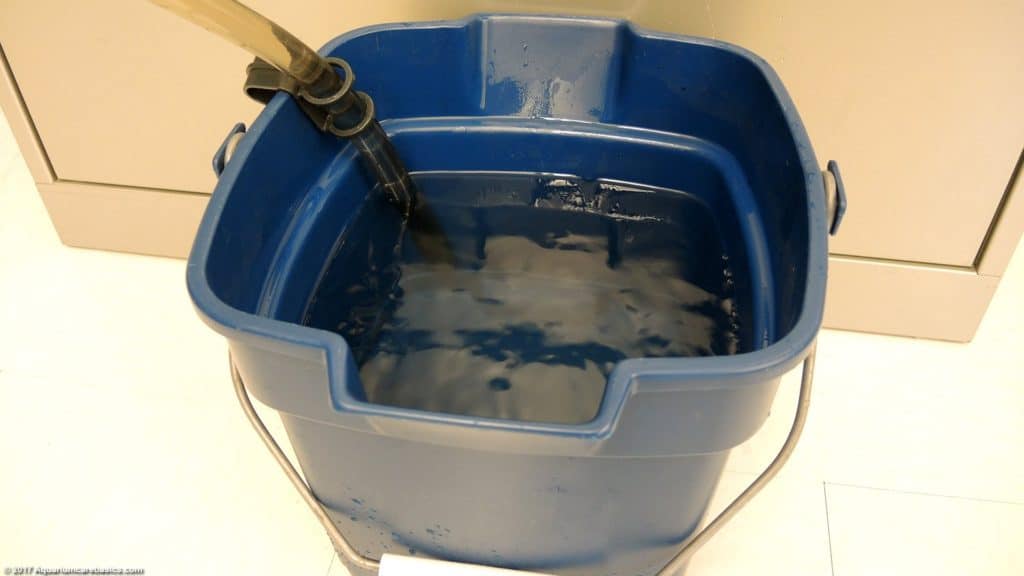
Temperature Increase Caused by Air Bubbles
Pumping your DWC with more amount of air bubbles can cause an increased temperature in your water. As the air pump continues to work, it gets hotter and produces thermal energy that is later transferred to your water via air bubbles.
Your roots should have an optimum water temperature of around 65-70 degrees. Reaching above that level can harm your roots PERMANENTLY.
As the temperature of the water increases, the respiration rate of the root cells increases, which will raise oxygen uptake. On the other hand, the rising water temperature will decrease the water surface tension which will reduce the ability of the water to hold dissolved oxygen. So, the roots will now face an increased oxygen demand and a diminishing supply.
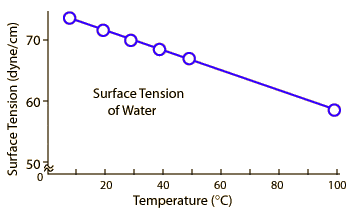
When the dissolved oxygen concentration decreases, the roots will stop water and minerals uptake. If the oxygen starvation continues, it will lead to root rot and a massive decrease in the plant’s yield.
By decreasing the air pump’s temperature, you can ultimately eliminate all of the harmful consequences that come with high water temperature. If your pump gets too much hot, you can direct a small fan to it.
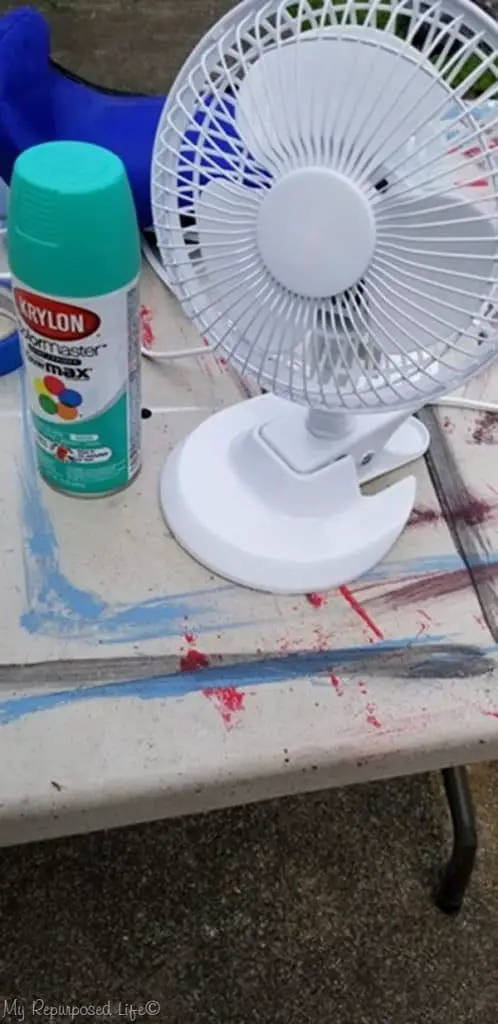
The most convenient and cheap way is to place it near an AC, it has given me the best results. For the people who are gifted with low outside temperatures, you can locate your air pump in front of a window and slightly open it to allow the cold to cool down the pump.
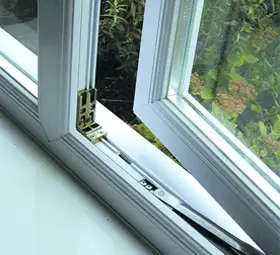
Root Clumping With Air Stones
As you keep supplying your roots with more air bubbles(more oxygen), your plant’s roots will experience a much faster rate of growth, which will eventually lead to clumps forming around the air stones. This happens due to the movement of roots toward the source of oxygen.
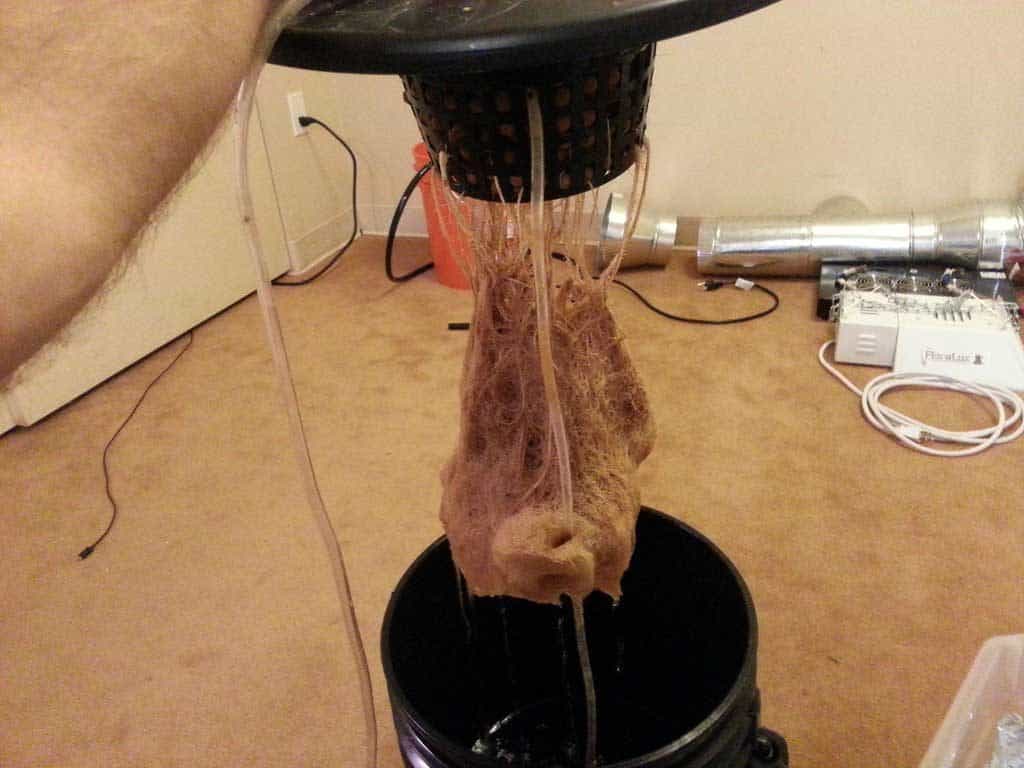
Root clumping around air stones can lead to suffocating of the roots in the upper portion of the bucket. As a result, your plant’s roots can reach a level of growth that will reversely affect its health.
How To Prevent Excessive Air Bubbles In The System
Now that you have learned why excessive air bubbles can harm your DWC hydroponic system, it’s time to know how to prevent excessive air bubbles in the first space.
Proper Air Pump Size Selection
One of the main causes of excessive air bubbles in hydroponic systems is an air pump that is too large for the system. To prevent this, it’s important to select the right size air pump for your system.
A good rule of thumb is to choose an air pump that can provide one watt of power per gallon of water in the system. For example, if you have a 10-gallon hydroponic system, you should choose an air pump that can provide at least 10 watts.
An average 5-gallon water bucket would require a 5-watt air pump with 9 LPM(1-watt per gallon).
Proper Water Depth Maintenance
Another important factor to consider is water depth. If the water level in your system is too low, the air stones or diffusers can create excessive bubbles, which can lead to poor oxygenation and nutrient delivery to your plants.
On the other hand, if the water level is too high, it can reduce the amount of air that the pump can deliver to the water. To prevent this, maintain a consistent water level in your system and ensure that the air stones or diffusers are submerged at least 2 inches below the water surface.
If you are not sure what should the exact water level of your DWC system be, I have created a guide that is a must-read for every hydroponic grower, you must check it out.
Regular Maintenance Of Air Stones Or Diffusers
Regular maintenance of air stones or diffusers is also important for preventing excessive air bubbles. Over time, air stones or diffusers can become clogged with mineral deposits, algae, or other debris, which can reduce their effectiveness and lead to excessive bubbles. To prevent this, clean your air stones or diffusers regularly, ideally once a month, with a solution of white vinegar and water.
Monitoring And Maintaining Water Quality
Finally, monitor and maintain water quality in your hydroponic system. Poor water quality can lead to nutrient deficiencies or toxicities, which can cause plant stress and reduce oxygenation levels. To prevent this, monitor your water quality regularly, and adjust pH levels as needed to maintain a range of 5.5 to 6.5.
If you are planning on aerating your DWC system with air stones, you must distribute them evenly through a bucket to avoid clumping. One of my favorite orders is to have some placed on the parameter of the bucket and some arranged in the center, and remember, you should never put your air stones in one place.

Also, you can try and get a flexible air diffuser that you can adjust to the shape of your DWC system. This way, all your roots will have an adequate and equal oxygen supply.

Related Questions
How Can I Grow My DWC Without Air Pump? You can grow it using the Kratky method. The idea is to decrease the water level to a point where part of your roots are submerged in water, and the other is in the air. The plants will develop what are called air roots that are needed for the absorption of oxygen from the surrounding air, and the submerged roots will be used for the water and minerals uptake.
What is The Right Bubble Size for My DWC? Practically, you can’t measure the size of the air bubbles created by the air stones. However, the smaller the bubble size, the better. This increases the surface area of the bubbles and boosts the amount of dissolved oxygen in the water.
Conclusion
Preventing excessive air bubbles in your hydroponic system is crucial to ensuring healthy plant growth and maximum yields. By selecting the right air pump size, maintaining proper water depth, regularly cleaning air stones or diffusers, and monitoring water quality, you can ensure that your plants receive the oxygen and nutrients they need to thrive.
An air pump must provide one watt of power per gallon of water in the system. The air stones must be well distributed and maintained throughout the DWC system.
Remember, hydroponic gardening is all about balance, and maintaining proper oxygenation is a key factor in achieving that balance. By following the tips outlined in this article, you can prevent the common problem of excessive air bubbles and set your hydroponic garden up for success.
So, whether you’re a seasoned hydroponic gardener or just starting out, make sure to prioritize oxygenation in your system. Your plants will thank you for it!

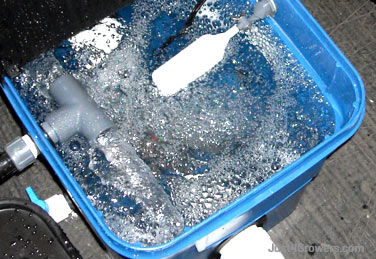

Been working with the development of an aquaponics system. This is my third year. The DO levels have been max at ambient from day one and it appears to be interfering with nutrient uptake. I use a 3 watt air pump to move gph in two separate systems. No water pump, no sump tank and no bio tank. Anyone suggestions?